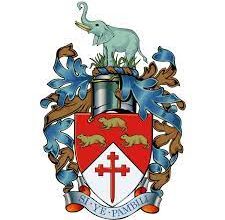The story of Dawrendale Platinum Mine

By Phelekezela Mphoko
When Ambassador Phelekezela Mphoko was transferred to the Russian Federation in December 2005, the first person to pay a courtesy call on him was Mr Elexander Chepic, who introduced himself as a business partner in a joint venture company with the Zimbabwe Defence Ministry to mine platinum in Zimbabwe.
He informed him that he had been advised by Colonel (Rtd) Tshinga Dube, to contact the Ambassador, whom Dube referred to as his friend.
Mr Chepic informed the Ambassador that the company was given a concession to mine Platinum in Section 43. The platinum reserves in Section 43 were 2000m underground and that required a lot of capital to start exploiting the platinum.
They requested that instead of Section 43, Section 40 which was in Dawrendale where the platinum reserves were found on the surface and were worth more than US$6 Billion dollars, should be allocated to them.
He emphasised that if Section 40 was allocated to them, by September of 2006, the company will be operational.
Therefore, they were appealing to be moved from Section 43 to Section 40. Efforts to move to Section 40 were made in the past but those efforts did not achieve anything.
Ambassador Mphoko enquired if it was true that Section 40 really had US$6 billion worth of platinum reserves. If it was true, then Mr Chepic could easily advance the Government of Zimbabwe with US$2 billion dollars to cover its expenses. Then the joint venture company will recover its money from their operations.
Mr Chepic agreed with that proposal.
He wrote a letter of commitment to advance the Government with US$2 billion dollars.
Ambassador Mphoko then took the commitment letter to Harare, to meet with President Mugabe on behalf of the company.
President Mugabe summoned Amos Midzi then Minister of Mines. The president wanted to know which company was mining in Dawrendale. Minister Midzi informed him that there were no activities in Dawrendale but he suspected that it was under Anglo-American, but it appeared Anglo-American had sold or given the concession to a Chinese Company.
The president gave specific instructions that whoever was there, should be removed and Section 40 be given to the joint venture Russian company.
This is how the Dawrendale Platinum mine ended up being allocated to the Russian company.
In diplomacy, the relations between countries are rated by the volume of trade between the two countries. In the Russian Federation, for example, African countries like Angola South Africa, Egypt and others were treated differently, as compared to Zimbabwe, as the volume of trade between them was huge.
After the US$6 billion dollar agreement, Ambassador Mphoko approached the Ministry of Foreign Affairs of the Russian Federation for the relations to be upgraded and raised from US$19 million dollars to US$6 billion dollars.
The Ministry informed him that it was not aware of such an agreement. They searched in their files for the company under review but the company was not found in their records.
The Ministry then informed him that no private Russian Company was allowed to mine any strategic mineral in a foreign country without the concern or permission from the Government.
In the meantime, some big Russian mining chief executives were enquiring with the Embassy because a Russian company was selling shares in Zimbabwe, to raise capital for the project. They were concerned that if they bought shares in Zimbabwe through a Russian company, and it turned out that the shares were illegal, how then do they recover their money?
The Ambassador decided to invite Mr Chepic for a meeting for an explanation following revelations that they were now using the concession for speculative purposes by selling shares to raise capital to invest in Zimbabwe.
Mr Chepic arrogantly refused to meet the Ambassador and informed him that he was dealing directly with their partners in Harare, the Minister of Defence and the Army.
When Ambassador Mphoko insisted on the meeting, there were calls from Harare that he should be withdrawn from Moscow and be replaced.
Dube’s name was mentioned as one of those proposed to replace Ambassador Mphoko who was now accused of interfering with their programme.
Vice-President Joseph Msika was roped into the campaign and was assigned to convince President Mugabe to replace Ambassador Mphoko. The Minister of Defence Dr Sydney Sekeramai was putting pressure on Foreign Affairs Minister Mbengegwi, and the generals were also putting pressure on Joey Bhima the permanent secretary in the Ministry of Foreign Affairs for the withdrawal of Mphoko from the Russian Federation.
Ambassador Mphoko was then summoned to Harare as the pressure had reached an alarming level. President Mugabe was very clear as to why there were such calls for the withdrawal of Ambassador Mphoko coming specifically from the Ministry of Defence.
The President had received certain facts about the said Russian company directly from the Russian Prime Minister’s Office, which was then under Vladimir Putin. President Mugabe confronted Vice President Msika, with those facts and dismissed the calls for Mphoko’s recall.
Ambassador Mphoko remained as Ambassador Of Zimbabwe to the Russian Federation until he was transferred to the Republic of South Africa in October 2010, as Ambassador. Meanwhile, the Dawrendale US$6 billion dollar platinum deposits have not been exploited to date.






